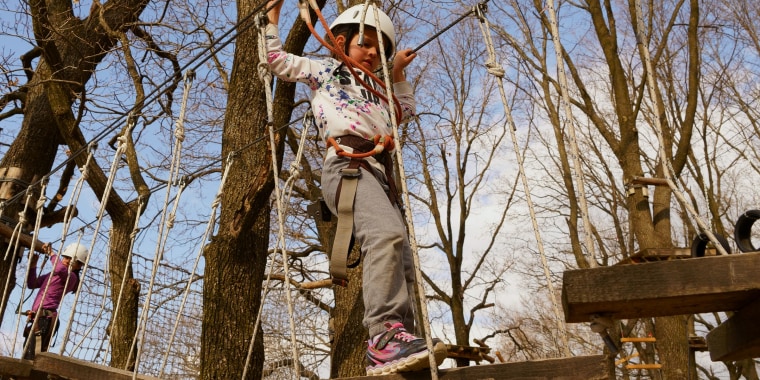It’s very natural for parents to want to protect their children from harm at all costs, but it’s also healthy and natural for children to want to take risks and explore the world around them. Children often learn by trying new things, and risk-taking is part of that.
Taking risks can increase a child’s confidence as they overcome fears and learn they are competent in ways they may not have known before. There are, of course, limits to the kinds of risks children at this age can take, and it largely depends on how comfortable you as a parent feel with the balance of risk and benefits associated with the actions, but it’s important to try to keep in mind that risks can be healthy for children too. Keep in mind that many things that may seem small to you can actually feel risky for your child because they're unsure how things will turn out. Some children are more risk-averse than others, and some may appear to take risks to an extreme. Those children may be more impulsive or immature, and may need to be warnings about consequences more than other children. Director of the Rutgers Social-Emotional Learning Lab Maurice Elias suggests that you try to emphasize your disapproval over an abstract consequence, as it is more likely to make sense to your child. For example, saying, “You have to hold my hand or walk right next to me when we’re in a crowd. If we get separated you might get lost and I would be very scared and worried,” instead of, “A stranger might take you,” places the fear on you and not on your child.
When children are able to step out of their comfort zone, it’s a risk. Allowing your child to take risks gives her a bit of thrill of the unknown -- they haven't taken the dog in the backyard alone before. Will the dog listen to them when they call? For younger children, taking a risk could be as simple as getting involved in class by raising a hand to answer a question. It could be as simple as a first sleepover or a new playdate. Making a new friend can also be a form of risk-taking for children this age. Perhaps a new student joins their class, or maybe they are the new student. Taking that first step, introducing themself, and trying to make a friend can be nerve-racking and a bit scary, but when the other child smiles back and they begin a conversation, they may feel proud of themself for taking the initiative. Age-appropriate risk-taking can be very beneficial for your child’s sense of self-confidence and can show them that even when the outcome is unknown, sometimes a risk is worth taking. Try to keep in mind that every risk has the potential for both success and failure. Learning often comes with trial and error, and learning from mistakes. Allowing your child to fail (without long-term harm or injury) is important for developing persistence and grit.
Parent Toolkit resources were developed by NBC News Learn with the help of subject-matter experts, including Maurice Elias, Director, Rutgers Social-Emotional and Character Development Lab; Jennifer Miller, Author, Confident Parents, Confident Kids; and Sean Slade, Director of Outreach, ASCD.
